Wartime Heritage
ASSOCIATION


copyright © Wartime Heritage Association
Website hosting courtesy of Register.com - a web.com company
Remembering World War II
Arthur Douglas Gavel

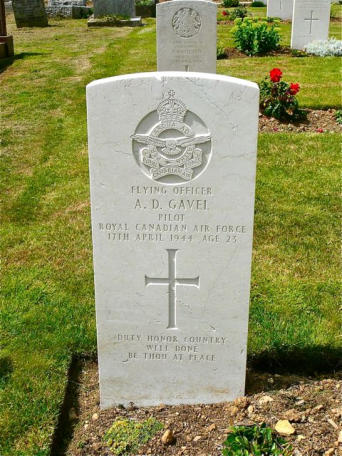
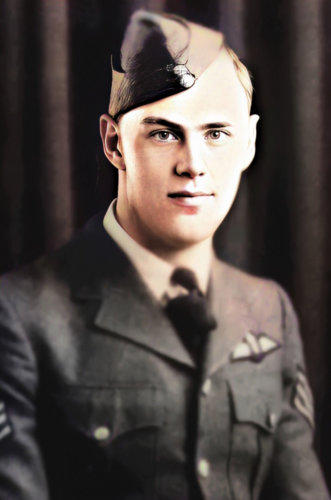
Name:
Service No:
Rank:
Service:
Date of Birth:
Place of Birth:
Date of Enlistment:
Place of Enlistment:
Address at Enlistment:
Age at Enlistment:
Height:
Complexion:
Eyes:
Hair:
Prior Military Service:
Martial Status:
Trade:
Religion:
Next of Kin:
Date of Death:
Age at Death:
Cemetery:
Grave Reference:
Arthur Douglas Gavel
J/23107
Flying Officer
525 Royal Air Force Squadron
February 12, 1921
Swift Current, Saskatchewan
April 30, 1941
Saskatoon, Saskatchewan
Waldeck, Saskatchewan
19
6 feet, 3 inches
Medium
Blue
Brown
Cadet, Swift Current Cadet Corps (1938-1939)
Trooper, 14th Canadian Light Horse (1939-1940)
Cadet, COTC University of Saskatchewan (1940)
Single
Student (University)
United Church
George William Gavel (Father) Waldeck, Saskatchewan
April 17, 1944
23
Newquay (Fairpark) Cemetery, Cornwall, United Kingdom
687
Commemorated on Page 313 of the Second World War Book of Remembrance
Displayed in the Memorial Chamber of the Peace Tower in Ottawa on July 3
Commemorated on the Runnymede Memorial, Englefield Green, Surrey, England
Arthur Douglas Gavel was the son of George William Gavel (1888–1968) and Vera Belle (Campbell) Gavel
(1890-1975) of Swift Current, Saskatchewan. Arthur was the brother of Audrey Irene Agnes Gavel
(1924–2010), Murray William Gavel (1928–2010) and Lorna Marion Gavel (b. 1936). Arthur’s father, George
William Gavel was born in Yarmouth, Nova Scotia on November 13, 1888, the son of John H. Gavel and Agnes
E. (Hurlburt) Gavel of Kelly’s Cove, Yarmouth Co., NS. He was a Veteran of World War I.
Arthur attended public school between 1927 and 1936, completing his grade ten. He then attended
Waldeck High School in 1936 through 1938 completing his grade eleven. He completed his senior
matriculation at the Swift Current Collegiate in 1939 and attended the University of Saskatchewan where he
completed two years of agricultural study before joining the Royal Canadian Air Force in 1941. At the time of
his enlistment he was enrolled in an aerial navigation course at the University of Saskatchewan.
During the summer months of 1939 and 1940 he was employed as a labourer at Dominion Experimental
Station in Swift Current. His sports involvement included hockey, swimming, softball, track and field, and
boxing.
Arthur Gavel was “taken on strength” with the Royal Canadian Air Force on April 30, 1941. He
completed his Initial Training in Course #33 at #4 ITS (Initial Training School) at RCAF Edmonton, Alberta
between August 9, 1941 and September 10, 1941; his Elementary Training in Course #38 at #18 EFTS
(Elementary Flight Training School) between September 13, 1941 and November 7, 1942 at Boundary Bay,
British Columbia, and his Service Flying Training between November 24, 1941 and March 13, 1942 in Course
#43 at #7 SFTS (Service Flying Training School) at RCAF Station Fort MacLeod. He obtained his Pilots Flying
Badge on March 13, 1942.
On March 15, 1942 Authur was assigned to #1 Y Depot Halifax, a holding unit head-quartered in
Halifax, Nova Scotia. Airmen on the move would be assigned to this unit for pay and rations. While posted to
#31 OTU (Operational Training Unit) at Debert, Nova Scotia on April 9, 1942, he trained at RAF Ferry
Command at Dorval, Quebec, one of a group selected for further training to prepare them for the Atlantic
Crossing as aircrew units. After the ferry training course at Dorval he was struck off strength from #31 OTU
and taken on strength with RAF Ferry Command at Dorval. He began delivering aircraft to Britain, flying what
was known as the “Atlantic Bridge” (Dorval – Gander – Prestwick), until October 14, 1942, when he taken on
strength with the RAF and posted to #15 OTU at Harwell, England. Posted to RAF Moreton-in-Marsh in
December 1942, Arthur began ferrying Wellington aircraft to the Middle East (Moreton – Portreath
(Cornwall) – Gibraltar – El Adem – Cairo). The return journey was normally by B.O.A.C. DC 3 Civil Flight into
Whitchurch, near Bristol.
On September 12, 1943 Flying Officer Gavel was posted with other ferry-crews, to RAF Weston Zoyland
to join 525 RAF Squadron, Transport Command, being formed and equipped with 14 former B.O.A.C.
Warwick Transports intended for an airline role alongside 511 RAF Squadron for transport services from the
United Kingdom to Cairo; United Kingdom to Rabat Sale; United Kingdom to the Azores; and United Kingdom
to Lisbon. 525 RAF Squadron was responsible for transport service from the United Kingdom to Maison
Blanche, Algiers, and United Kingdom to Malta.
On February 6, 1944 the Squadron moved from RAF Weston Zoyland, Somerset, England to RAF
Lyneham, Wiltshire, England. During the daylight hours on the day of departure, the Warwick aircraft would
fly from RAF Lyneham to RAF St. Mawgan, the Royal Air Force station near St Mawgan and Newquay in
Cornwall, England and position there till after dark. Freight would be loaded at RAF Lyneham, but
passengers and a top-up of fuel would be taken on at St. Mawgan.
After midnight the aircraft would take off on flight down through the Bay of Biscay to Gibraltar, using
the cover of darkness to avoid German fighter aircraft coming out from the French coast. The night routine
had the one advantage that dawn would break off the Spanish/Portuguese coast, to confirm the Navigator’s
position to the ‘visual’ approach into Gibraltar.
Flying Officer Gavel completed his first overseas flight as pilot from RAF Lyneham to Maison Blanche
Airfield in Algeria via Gibraltar and return on December 19, 1943.
The flight on April 17, 1944 carried a crew of four, including the pilot, Flying Officer Gavel and twelve
passengers. RAF 525 Squadron’s Vickers Warwick III (#BV 247) aircraft departed RAF Station St. Mawgan,
Newquay, Cornwall, on the scheduled flight (the UK to Algiers Maison Blance airport, via Gibraltar).
The aircraft departed from the main runway at 00:04 am on a heading straight out over the sea. Lift-
off was observed by the airfield controller and he watched until navigation lights were routinely switched
off. The aircraft reached a height of approximately 2000 feet, and then at a point about mile off the coast,
still in line with the end of the runway, a Home Guard Sergeant saw an explosion and the aircraft going
down. He immediately reported what he had seen by wireless.
All the crew and passengers on board the aircraft perished. Fourteen bodies were recovered from the
crash area during the morning hours. The body of Flying Officer Gavel and that of the second pilot Flying
Officer Michael Rowe remained missing.
Arthur Gavel's body was recovered on Whipsiderry Beach on April 25 and Michael Rowe's body was
recovered from the sea off Watergate on May 8, both from within the general area of the crash.
The body of Flying Officer Gavel had sustained serious injuries, was wearing items of clothing of a
Canadian Flying Officer Pilot and a wrist-watch which had stopped at the time of the crash; however, the
identification disc was missing. The body was taken to the mortuary at RAF St Mawgan and identification fell
to the "Crash Officer" Flight Lieutenant Stan Stanlake. He contacted 525 Squadron Adjutant at Lyneham, and
having established that a personal friend and squadron colleague of Arthur Gavel could identify the wrist
watch taken from the body, he arranged for its immediate despatch there by air. There it was seen and
positively identified by Flying Officer Bill Bristow as being that of his best friend, Arthur Gavel, and this was
communicated back to St Mawgan.
All bodies recovered on the morning of April 17, 1944 had injuries consistent with those caused in an
air crash; however, Arthur Gavel had other injuries which indicated proximity to an explosion, and once the
Commanding Officer was informed, instructions were issued to prevent viewing or discussion.
On April 26, the body was removed from RAF St. Mawgan, the Crash Officer being told it was for
specialist post-mortem
examination. The personnel assumed that it was because of the injuries caused by an
explosion and which had caused the Station Commander such concern.
On April 27, an inquest at Newquay, accepted evidence of a Pathologist, that death was due to
drowning and there was no evidence to show how, when and where the deceased met his death. The body
was buried with a tombstone inscribed "Unknown Sailor of the Second World War" in Fairpark Cemetery,
Newquay.
Chief Inspector Derek Fowkes, one of Cornwall's most respected police officers, served in Newquay
from 1970 to 1984 and became interested in the crash when he was examining wartime records. Because of
the location where the unidentified body was located, he began to think it could be that of the pilot of the
downed Vickers Warwick I (BV247) Flying Officer Arthur Gavel.
In 1984, forty years after the crash, Derek Fowkes in collaboration with Murray W. Gavel of Swift
Current, Saskatchewan the brother of Arthur Gavel, were able to finally identify the body of Arthur Gavel.
Two RAF Officers, Group Captain Tony Balfour of
the RAF’s Institute of Pathology and Tropical Medicine
and Group Captain David Chapman-Andrews, a
consultant in oral surgery confirmed the unknown
sailor’s grave was that of pilot Arthur Douglas Gavel.
In 1988, Flying Officer Arthur Douglas Gavel was
re-interred in Plot 687 with full military honours,
including a Royal Air Force honour guard and a new
headstone was placed on his grave.
Sources:
The Canadian Virtual War Memorial
Library and Archives Canada
Research by Derek Fowkes
Laurie Gavel, (nephew of Arthur Gavel)
Also see:
Mystery Flight Royal Air Force Squadron 525
Family Finds Closure
Sussex History Forum
Remembrance Page George William Gavel (father)
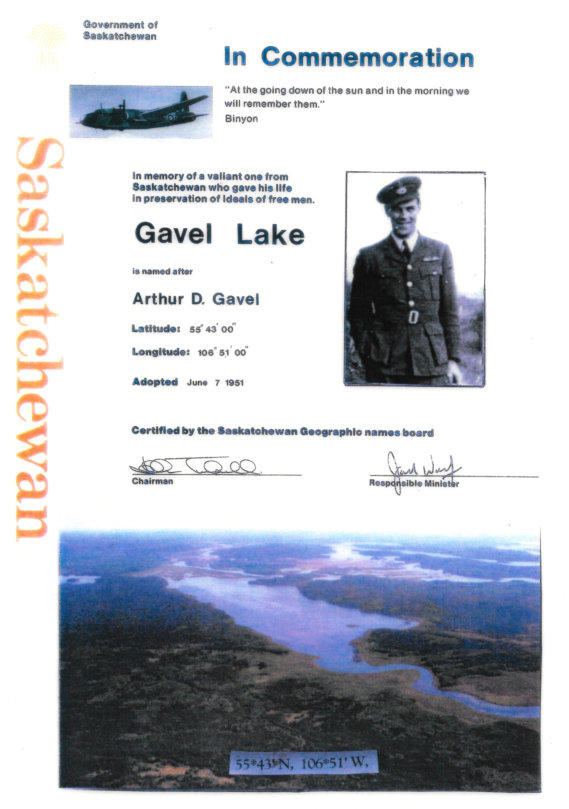
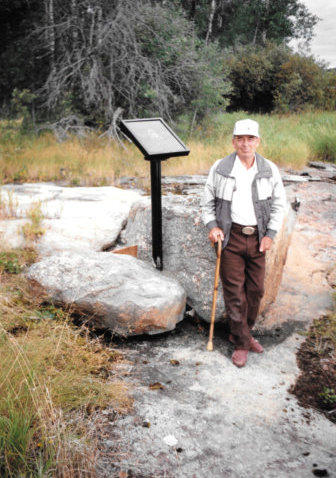
Murray Gavel, brother of Arthur Gavel at Lake
Gavel in Saskatchewan.
The Government of Saskatchewan on June 7,
1951 named a lake, Gavel Lake, in memory of
Flying Officer Arthur Douglas Gavel.
The family of Arthur placed a Memorial Plaque on
the shore of the Lake.
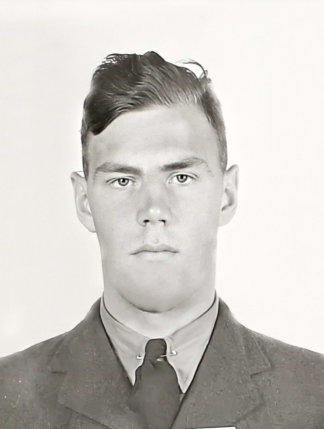
Arthur Douglas Gavel


- World War I - Menu
- WWI Stories and Articles
- Photos - Yarmouth Soldiers
- Selection of World War I Songs
- WWI Casualties of Yarmouth, NS
- Those Who Served - Yarmouth, NS
- WWI Casualties Digby Co. NS
- WWI Casualties Shelburne Co. NS
- Merchant Mariners (1915) Yarmouth, NS
- Canadian Forestry Corps - Non Yarmouth Birth/Residence Enlistments
- US Draft Registry - Yarmouth NS Born


- World War II - Menu
- WWII Stories and Articles
- Telegraphist Air Gunners
- WWII Casualties of Nova Scotia
- US Casualties with NS Connection
- Far East/Pacific Casualties with NS Connection
- Merchant Navy Casualties Nova Scotia
- Nova Scotia WWII Casualties Holten Canadian War Cemetery
- D-Day Casualties - Nova Scotia
- CANLOAN Program Casualties - Nova Scotia
- Battle of the Bulge Casualties - Nova Scotia
- WWII Casualties Yarmouth NS
- Yarmouth Casualties - RCAF RAF Canadian Army WWII
- Yarmouth Co., Marrages WWII
- Casualties Non-Born/Residents with Connection to Yarmouth Co., Nova Scotia.
- WWII Casualties Digby Co., NS
- Non-Nova Scotian WWII Casualties Buried in Nova Scotia
- WWII RCAF Casualties Aged 16-18
- Brothers/Sisters Who Served - World War II













